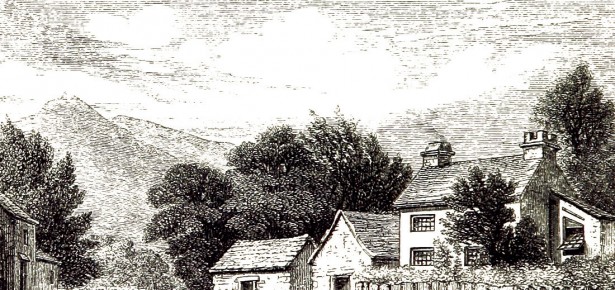
Dove Cottage
The most obviously wrong thing about this title is that the people included in the category weren’t all English. The next thing is that they weren’t all men (not by the second series, at any rate).
In 1878 the publishing house of Macmillan instituted a series of small red books (most about 220 pages in length) about English Men of Letters, and written (mostly) by other English Men of Letters. The first series (completed in 1892), which we have just reissued, eventually consisted of 39 volumes, of which the general editor was John Morley (1838–1923), the journalist, editor, M.P. and statesman. Morley was a ‘Gladstone Liberal’, and wrote biographies of the Grand Old Man and of Richard Cobden. He contributed only one book to the first series, on Burke (1879). The first title to be published was Samuel Johnson, by Leslie Stephen (who also wrote on Pope and Swift), and the chronological range was from Chaucer to Thackeray (who had died in 1863).
Burke and Swift, along with Scott, Burns, Hume, Carlyle, Sheridan, Goldsmith and Hawthorne, might have had views about being classed as ‘English’ – though presumably the word in this context is shorthand for ‘writing in the English language’. In the second series, however, some of the ‘English Men’ were George Eliot (again by Stephen), Maria Edgeworth (by Emily Lawless), and Jane Austen.
Interestingly, Shakespeare – by Sir Walter Raleigh, ho ho – did not appear until the second series. The selection of subjects must to an extent have depended on which critics were available at the time to deal with which authors, but also indicates which authors were then regarded as canonical. I suppose that Shakespeare is the oddest omission from the first series; and that Walter Savage Landor (by Sidney Colvin, Director of the Fitzwilliam Museum, who also tackled Keats, and later edited his letters to his family and friends) is the figure whose reputation has survived least well?
The matching of writer to subject is also interesting. Henry James (not yet ‘The Master’ – Roderick Hudson had been published only five years previously) on Nathaniel Hawthorne; Anthony Trollope on Thackeray, who had been his friend from 1860 to the latter’s death; Adolphus Ward (1837–1924), the remarkable polymath who wrote on English literature from the fourteenth to the nineteenth centuries, translated Curtius’ History of Greece and later edited The Cambridge History of British Foreign Policy, 1783–1919, on Dickens – whom had had known, but only slightly.
The only woman writer in the first series was Margaret Oliphant (1828–97), on Sheridan: amid her prodigious output as a novelist, she produced several non-fiction works, including a history of the publishing house of Blackwood, and works Victorian women novelists and on the artistic history of Italian cities.
The intention of the series was that the books should be a short introduction to the subject and his works, but also that the life should illuminate the works, and vice versa. Trollope said in Thackeray that he was addressing what he described as every reader’s desire ‘to know not only what a great writer has written, but also of what nature has been the man who has produced such great work’. The books are of course not even remotely ‘warts and all’ – the tragedy of Thackeray’s marriage, and the failure of Dickens’, or the all-round downright unpleasantness of Landor, are dealt with as discreetly as any Victorian mother could wish in a book to be read by her daughters (or servants). However, if you believe that the life (however redacted) does illuminate the art, you could do worse than read these ‘short introductions’; and if you want to know how the late Victorians viewed the Great Writers, look no further.
Latest Comments
Have your say!